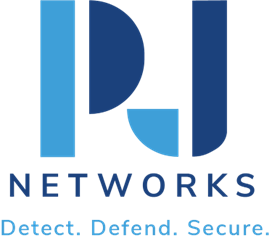SOC in Detection & Response to Threats
At this time when cyber threats are at an all-time high (in volume, as well as potency) companies cannot afford to ignore the need to increase their defenses. In the middle of a strong cybersecurity strategy are Security Operations Centers (SOCs): pioneering responsive centers tailored to detect, react to and tackle threats. This blog post explores the vital part that a SOC can play in enabling an organization to better handle cybersecurity threats.
What is a SOC?
A Security Operations Center (SOC) is a facility where an organization’s information technology (IT), security, and other staff work together to prevent, detect, analyze, and respond to cybersecurity incidents. A SOC is fundamentally a realtime solution to detect, analyse and respond to cybersecurity incidents. SOC is the first line of defense against any cyber-threat — It is an organized and a dedicated team of security analysts, incident responders (CSIRT), and threat hunters as part of Network Security Management Services in a company. Traditional security approaches typically are reactive in nature; SOCs are proactive and always looking for deeper insight into possible threats, known as zero-day attacks.
SOC vs Traditional Security
Basic security monitoring, such as firewall installations, antivirus software, and the somewhat-regular review of low-volume security logs will no longer keep you safe from modern cyber threats. Most traditional techniques are a priori, meaning only looking for alarms after everyone had made it over your barricades. On the other hand, a SOC uses a far more dynamic process. A SOC does more than just monitoring and logging of incidents. A well-established SOC that provides full-spectrum threat intelligence, vulnerability assessments, and threat hunting is an example of this. This can be summed up as the culture of being both proactive and dramatic. SOCs are continuously monitoring and the activities described above, utilizing modern tools for Incident Response & Threat Detection. Plus, traditional monitoring often lacks automation post-detection. A SOC uses machine learning and artificial intelligence to automate much of the threat management process from quickly identifying security incidents to triaging incidents in seconds.
Key Functions of a SOC
A SOC is a complex entity responsible for multiple security functions, acting as both a strategic and tactical element of an organisation’s overall cybersecurity posture. Here are a few key functions:
- Continuous Monitoring: Round-the-clock surveillance across all digital assets (SOCs uses latest tools to identify malicious activities)
- Threat Intelligence: SOCs collect, analyze and share threat intelligence. This information aid us to have a better visibility in the changing threat landscape, and then help teams prediction and prevention steps before it even happen.
- Vulnerability management: It is very important to highlight and assert vulnerability identification, assessment and prioritization in systems These are applied to the vulnerabilities and release to SOC teams before they can be exploited.
- Incident Management and Incident Response: If a threat is identified by the SOC, an immediate action will be done in order to minimize the impact or prevent escalation.
- Security Information and Event Management (SIEM): The SOC leverages SIEM technology to aggregate security data from throughout, revealing visibility as well as actionability.
- Compliance Management: The goal of SOCs is to maintain compliance with relevant regulations and standards which minimize legal risks as well as ensure operational continuity.
How SOCs Enhance Incident Response Process
Response– Incident response is a key component of any cybersecurity program and SOCs are essential to improving this function.
The Role of SOCs in Incident Response
- Rapid Detection and Analysis: SOCs are continuously monitoring networks, which help in quick detection of threats. SOC analysts using state-of-the-art threat detection tools can assess incidents quickly and prioritize them according to their severity and potential impact.
- Coordinated Response: SOCs provide a centralized system in how we respond to incidents, ensuring incident response from multiple departments can be treated as unified incident management solution.
- Automated Responses: Automations enable SOCs to execute automated response immediately after detection of a threat, reducing reaction times and shrinking the exposure window.
- Post-Incident Review and Improvement: SOCs conduct post-mortem reviews to evaluate the root cause of an incident and strengthen the security posture. The purpose of documenting lessons learned is to make sure that the organisation learn from incidents.
- Improved Communication: SOCs establish communication guidelines for incident responses, keep different teams apprised of information and let relevant parties know what is happening.
- Resilience: By continuously testing and adjusting incident response plans, SOCs make the organization more resilient to attacks, decreasing downtime and reducing likely damage.
The bottom line is Security Operations Center for a broader scope of monitoring, as well as an integrated response valuable By actively participating in threat detection, incident response, and continuous improvement processes, SOCs help organizations to secure their digital infrastructure way better. Having a strong SOC is mandatory for any organization that aspires to keep up with the cybersecurity landscape.
